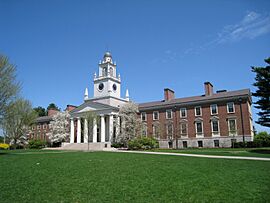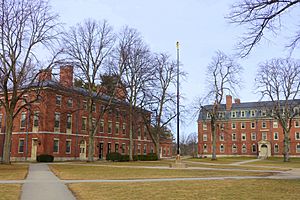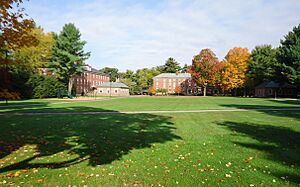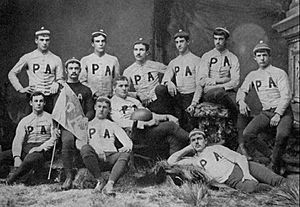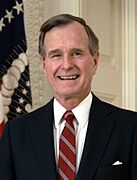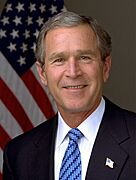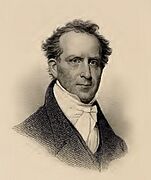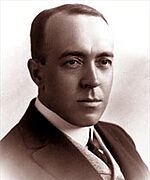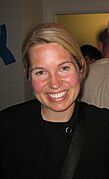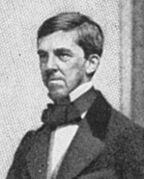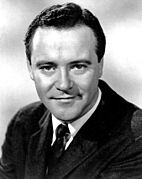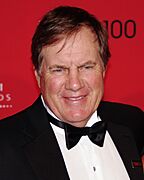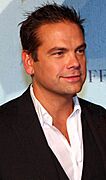Phillips Academy facts for kids
Quick facts for kids Phillips Academy |
|
|---|---|
 |
|
| Address | |
|
180 Main Street
, Massachusetts
01810
United States
|
|
| Coordinates | 42°38′50″N 71°07′54″W / 42.6473°N 71.1316°W |
| Information | |
| School type | |
| Motto | |
| Religious affiliation(s) | Nonsectarian |
| Established | 1778 |
| Founder | Samuel Phillips Jr. |
| CEEB code | 220030 |
| NCES School ID | 00603199 |
| President | Amy Falls |
| Head of School | Raynard S. Kington |
| Teaching staff | 232 |
| Grades | 9–12, PG |
| Gender | Co-educational |
| Enrollment | 1,149 (2022-23) |
| • Boarding students | 848 |
| • Day students | 282 |
| Student to teacher ratio | 7:1 |
| Campus size | 706 acres (3 km2) |
| Campus type | Suburban |
| Color(s) |
|
| Athletics conference | NEPSAP |
| Mascot | Gunga, the gorilla |
| Team name | Big Blue |
| Rival | Phillips Exeter Academy |
| Accreditation | NEASC |
| Newspaper | The Phillipian |
| Yearbook | Pot Pourri |
| Endowment | $1.41 billion (September 2024) |
| School fees | Application fee: $60 International students application fee: $125 |
| Tuition | Boarding students: $76,731 Day students: $59,478 |
| Affiliations | ESA TSAO |
| Alumni | Old Phillipians |
Phillips Academy, often called Andover or PA, is a private school in Andover, Massachusetts. It's a "college-prep" school, meaning it gets students ready for college. Students can live at the school (boarding) or travel there each day (day students). It welcomes both boys and girls.
About 1,150 students attend Andover, from 9th to 12th grade, plus some who take an extra year after high school. It's also part of special groups called the Eight Schools Association and the Ten Schools Admission Organization.
Andover was started in 1778, making it one of the oldest high schools in the United States. Many famous people have gone to Andover. This includes two U.S. presidents, George H. W. Bush and George W. Bush, and sports coach Bill Belichick. It also counts five Nobel Prize winners and six Medal of Honor recipients among its former students.
Andover helps students pay for their education if they need it. The school offers "need-blind admission," which means they accept students based on their abilities, not how much money their family has. They also provide financial aid that covers all of a student's proven financial need. Almost half of Andover students (47%) get financial help.
Contents
History
How Phillips Academy Began
Phillips Academy is the oldest school of its kind in the United States. It was founded in 1778 by Samuel Phillips Jr., a local businessman. He wanted to create a school that would prepare students for religious ministry.
The American Revolutionary War had caused problems for schools in New England. Phillips Academy helped fill this gap. The school's founders were strong supporters of the American Revolution. Samuel Phillips and Eliphalet Pearson, who became Andover's first head of school, even made gunpowder for the Continental Army.
Many important figures from the Revolution had ties to Andover. George Washington visited the school in 1789 when he was president. Eight of his relatives later attended Andover. John Hancock signed the school's founding papers. Paul Revere designed the school's seal.
Revere's seal design includes a beehive, crops, the sun, and two mottos. These mottos are Non Sibi ("not for oneself") and Finis Origine Pendet ("the end depends upon the beginning"). Other mottos for the school are Youth from Every Quarter and Knowledge and Goodness.
In 1828, a sister school for girls, Abbot Academy, was founded nearby. Abbot was one of the first high schools for girls in New England. Even though they were close, the two schools tried to keep their students separate. Phillips Academy and Abbot Academy joined together in 1973.
Andover's Rivalry with Exeter
Andover's main rival is Phillips Exeter Academy. This school was started three years later by Samuel Phillips' uncle, Dr. John Phillips, in New Hampshire. Andover and Exeter have competed in sports since 1861. Their football teams have played almost every year since 1878. This makes their football rivalry one of the oldest high school rivalries in the country.
For many years, Phillips Academy shared its campus with the Andover Theological Seminary. This seminary was founded by religious scholars who left Harvard University. The Phillips family supported the seminary financially.
The rivalry between Andover and Exeter used to have religious differences. Exeter was more open to different religious views. Andover, however, was very committed to its traditional religious teachings. This meant Andover students often went to Yale University, which was more aligned with their beliefs. Exeter students often went to Harvard. Today, both Andover and Exeter are non-religious schools, so the rivalry is just about sports and academics.
Growing as a College-Prep School
After a period of decline, Andover grew into one of the largest and richest prep schools in the U.S. Leaders like Cecil Bancroft (1873–1901), Alfred Stearns (1903–33), and Claude Fuess (1933–48) helped make this happen. Bancroft improved the school's academics. He changed the courses to meet college expectations. He also visited schools in England to learn new teaching methods.
Andover became very good at sending its students to top colleges like Yale, Harvard, or Princeton. In 1931, 64% of students went to these schools, and in 1937, 74% did. The number of students also grew. It went from 177 students in 1877 to about 400 by 1901, and over 700 by 1937.
To keep up with newer boarding schools, Andover built new student housing and updated its classrooms. This took many years. By 1929, all boarding students could live on campus. Much of this growth was paid for by Thomas Cochran, a banker who gave about $10 million to Andover. He wanted to make Andover "the most beautiful school in America."
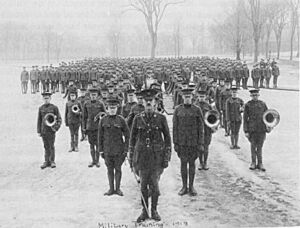
During this time, Andover was mostly white and Protestant. However, it started to become more diverse. The school offered more scholarships, and it was one of the first New England boarding schools to accept Black students in the 1850s. Andover also admitted more Jewish students, but their numbers were limited. It was also one of the first American schools to educate Chinese students. One of these students, Liang Cheng, later became the Chinese ambassador to the United States.
In the 1930s, Andover took part in a student exchange program with schools in the U.S., Britain, and Nazi Germany. As relations with Germany worsened, Andover ended this program in 1939. During World War II, over 3,000 Andover graduates served in the war.
From Post-War to Today
John M. Kemper (1948–71) updated the school's courses and improved pay for teachers. Under his leadership, Andover helped create the Advanced Placement (AP) program. This program allows high school students to take college-level courses.
Andover also worked to make the campus more open to everyone. It started admitting more Black students in the 1950s and 1960s. In 1973, Phillips Academy became co-educational, meaning it started accepting girls, when it merged with Abbot Academy.
Today, Raynard S. Kington has been the Head of School since 2019. He used to be the president of Grinnell College. The school is overseen by a board of trustees, who are mostly former students. Andover is approved by the New England Association of Schools and Colleges.
Admissions and Student Body
How to Get Admitted
Phillips Academy is one of the most selective boarding schools in the United States. This means it's very hard to get in, especially for a school its size. In 2016, only four boarding schools had an acceptance rate lower than 15%. Andover was larger than the other three combined. The acceptance rate is usually around 13%. During the COVID-19 pandemic, it dropped to 9% in 2022.
Andover has used a "need-blind admission" policy since 2007. This means they don't look at how much money a family has when deciding if a student can get in. They also promise to cover 100% of a student's financial need. To help students from "historically underrepresented" backgrounds, Andover pays for some students and their guardians to visit the campus during the application process.
About one in eight Andover students (12.9%) has a parent who went to Andover. Also, at least one in five students has a sibling who attended the school.
Who Are the Students?
| Race and ethnicity | PA | Massachusetts | ||
|---|---|---|---|---|
| White | 36.5% |
|
69.6% |
|
| Asian | 33.0% |
|
7.7% |
|
| Black | 10.2% |
|
9.5% |
|
| Hispanic | 10.5% |
|
13.1% |
|
| Multiracial | 9.3% |
|
2.7% |
|
Andover's student body is more racially diverse than the state of Massachusetts. The school reports that 59% of its students identify as people of color.
In the 2021–2022 school year, Andover reported that 36.5% of its students were white, 33.0% were Asian, 10.2% were Black, 10.5% were Hispanic, and 9.3% were multiracial.
Andover has many international students, making up about 15% of the student body. In March 2024, 184 international students were enrolled. A quarter of the students live off campus in nearby towns.
Most Andover students come from well-off families. As of March 2023, 95.4% of students had at least one parent who graduated from college. Also, 46.8% of students came from families earning over $250,000 per year. Politically, 38.8% of students identified as liberal.
Academics
What Courses Can You Take?
Phillips Academy uses a trimester program, which means the school year is divided into three terms. Each term lasts about ten weeks. Andover has 232 teachers, and there are 7 students for every teacher. The average class size is 13 students. This allows Andover to offer over 300 courses. Students can also do independent research with a teacher's guidance.
Andover does not rank its students. It uses a 6.0 GPA scale instead of the common 4.0 scale. On this scale, a 6 is excellent, a 5 is an honors grade, and a 2 is a passing grade. A student survey in March 2023 found the average GPA was 5.41.
Andover also has a five-week summer program for about 600 students entering grades 8-12. This program has been running since 1942.
Test Scores
Andover does not publicly share its students' standardized test scores. This is because many colleges stopped requiring these tests during the COVID-19 pandemic. For the Class of 2019, the average combined SAT score was 1460. The average combined ACT score was 31.1.
Grade Levels at Andover
In the 2022–23 school year, Andover had 214 freshmen (called "juniors" at Andover). There were 276 sophomores ("lowers"), 311 juniors ("uppers"), and 348 seniors and postgraduates ("seniors" and "PGs"). In total, 1,149 students were enrolled.
Facilities
The oldest part of Phillips Academy's campus is a historic area called the Academy Hill Historic District. This area includes buildings from Phillips Academy, Abbot Academy, and the Andover Theological Seminary. Phillips Academy bought the seminary's buildings when it moved in 1907.
In the 1920s and 1930s, Andover added many new buildings around this old core. These included the main office building, library, dining hall, art gallery, chapel, math building, and dorms. Many buildings are named after famous Americans, some of whom attended Andover.
Parts of Andover's campus were designed by Frederick Law Olmsted. He also designed Central Park in New York City. Olmsted and his team advised Andover on campus design for over 50 years, starting in 1891.
Important Academic Buildings
- George Washington Hall holds the school's main offices and the Drama and Art Departments. It also has the school post office and a lounge for day students. It was built in 1926.
- Bulfinch Hall is home to the English Department. It was built in 1819.
- Pearson Hall houses the Classics Department. It was built in 1817 and used to be a chapel for the seminary.
- Morse Hall contains the Math Department, the student radio station, and some student newspapers. It is named after Samuel Morse, who invented the telegraph and Morse code.
- Gelb Science Center is where the Science Department is located. It also has an observatory. It opened in 2004.
- Oliver Wendell Holmes Library (OWHL) has over 80,000 books and classrooms. It was built in 1929 and has been updated several times. It is named after Oliver Wendell Holmes Sr., a famous poet and doctor.
Student Facilities
- Cochran Chapel is used for religious services and houses departments like philosophy and community service.
- Paresky Commons is the school's dining hall. It opened in 1930 and was updated in 2007. It is named after a donor, David Paresky.
- Cochran Wildlife Sanctuary is a 65-acre area with a Log Cabin. Student groups use the cabin for meetings and sleepovers.
- Rebecca M. Sykes Wellness Center provides health and mental health services.
- Andover has two large athletic centers: the Snyder Center and the Pan Athletic Center.
The school's dormitories (student housing) vary in size. They are grouped into five "clusters," each with about 220 students and 40 faculty members. Many social events happen within these clusters. The oldest dorm still standing is Blanchard House, built in 1789.
Two dorms are named after the Andover Theological Seminary's history. America House is where the song America was written. Stowe House was the home of writer Harriet Beecher Stowe. She used money from her book Uncle Tom's Cabin to fix up the house.
The academy also runs the Andover Inn, a hotel with 30 guest rooms. It was built in 1930 and was recently updated in 2023.
Museums
Addison Gallery of American Art
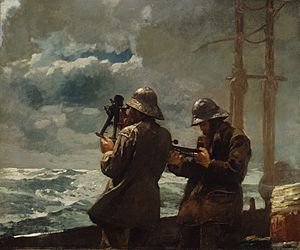
The Addison Gallery of American Art is an art museum given to the school by Thomas Cochran. It is open to the public. The museum was renovated and expanded from 2008 to 2010.
The gallery has a permanent collection of famous American art. This includes Winslow Homer's Eight Bells. It also features works by artists like John Singleton Copley, Edward Hopper, and Jackson Pollock. The museum also has collections of American photography and old decorative items.
Robert S. Peabody Institute of Archaeology
The Robert S. Peabody Institute of Archaeology was founded in 1901. Andover calls it "one of the nation's major repositories of Native American archaeological collections." Unlike the Addison Gallery, you need an appointment to visit the Peabody Institute.
The collection includes items from different parts of North America, dating back over 10,000 years. Since the early 1990s, the museum has worked to follow the Native American Graves Protection and Repatriation Act. This law helps return Native American cultural items to their tribes.
Extracurricular Activities
Phillips Academy offers many extracurricular activities. These include music groups, a school newspaper, an Internet radio station, and a debate club.
Andover's weekly student newspaper, The Phillipian, claims to have been publishing since 1857. If true, it would be the oldest high school newspaper in the country. The newspaper is "entirely uncensored and student run."
The Philomathean Society is the second-oldest high school debating society in the nation.
Andover students also run the Phillips Academy Poll. This is the first public opinion poll done by high school students. In 2022, the poll was featured by news outlets after it released results for the midterm elections.
Athletics
Sports History at Andover
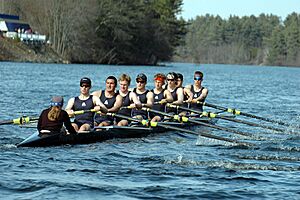
Sports have always been a big part of Phillips Academy. As early as 1805, students were playing a form of "football." Andover played in the first-ever high school football game in 1875. The school created an athletics department in 1903 with the goal of "Athletics for All."
Today, Andover is a strong athletic school among New England private schools. Andover athletes have won over 110 New England championships in the last 30 years. Some teams have even competed internationally. For example, the boys' crew team has raced in England's Henley Royal Regatta.
Andover is not part of a formal sports conference. However, it competes in certain athletic events through its membership in the Eight Schools Association. In postseason games, Andover's teams compete in playoffs organized by the New England Preparatory School Athletic Council.
What Sports Does Andover Offer?
Andover offers 29 interscholastic (school vs. school) sports programs. It also has 44 intramural (within the school) or instructional programs. These include fencing, tai chi, figure skating, and yoga.
Fall Sports
- Crew (instructional)
- Cross country
- Dance (Ballet, Modern, Hip-Hop)
- Fencing (instructional)
- Field hockey
- Skating (instructional)
- FIT (Fundamentals In Training)
- Football
- Gunga FIT ("extreme" FIT)
- Outdoor Pursuits
- Pilates
- SLAM (cheerleading)
- Soccer
- Soccer (intramural)
- Squash (instructional)
- Swimming (instructional)
- Tennis (instructional)
- Volleyball (girls')
- Volleyball (instructional)
- Water polo (boys')
- Yoga
- Zumba
Winter Sports
- Basketball
- Basketball (intramural)
- Dance (Ballet, Modern, Hip-Hop)
- FIT (Fundamentals In Training)
- Gunga FIT ("extreme" FIT)
- Hockey
- Hockey (intramural)
- Indoor cycling (instructional)
- Indoor track
- Junior Basketball (intramural)
- Nordic skiing
- Outdoor Pursuits
- Recreational cross-country skiing
- SLAM (Spirit Leaders)
- Squash
- Squash (intramural)
- Swimming and diving
- Wrestling
- Yoga
- Zumba
Spring Sports
- Baseball
- Crew
- Cycling
- Dance (Ballet, Modern, Hip-Hop)
- Fencing (instructional)
- FIT (Fundamentals In Training)
- Golf
- Gunga FIT ("extreme" FIT)
- Lacrosse
- Outdoor Pursuits
- Pilates
- Softball
- Squash (instructional)
- Swimming (instructional)
- Tennis
- Tennis (intramural)
- Track
- Ultimate Frisbee
- Ultimate Frisbee (intramural)
- Volleyball (boys')
- Water polo (girls')
- Yoga
Finances
School's Money and Costs
As of September 2024, Phillips Academy had an endowment of $1.41 billion. An endowment is a large sum of money invested to support the school's operations. In the 2021–22 school year, the school spent $110.2 million on programs and $22.9 million on grants, mostly for student financial aid.
The school had a very successful fundraising campaign from 2017 to 2023, raising $408.9 million. This money helped add over $103 million to the financial aid fund. It also raised $121 million to improve health, dorm, library, music, and athletic facilities.
Tuition and Financial Aid
For the 2024–25 school year, Phillips Academy charged boarding students $73,780 and day students $57,190. Financial aid can cover about $58,000 for boarding students. As mentioned, the school has a "need-blind admission" policy. This means they accept students based on their abilities, not their family's income. Also, 47% of students receive financial aid. The school promises to meet 100% of each accepted student's proven financial need.
Tuition costs at Phillips Academy have gone up a lot in the 21st century. In the 2018–19 school year, boarding students paid $55,800 and day students paid $43,300. This made it one of the most expensive boarding schools in the world.
| Year | Boarding Tuition | Day Student Tuition | Year/Year Boarding Increase % |
|---|---|---|---|
| 2001–2002 | $26,900 | $20,900 | (?) |
| 2006–2007 | $35,250 | $27,450 | 6.82% |
| 2011–2012 | $42,350 | $32,850 | 2.54% |
| 2016–2017 | $52,100 | $40,500 | 3.58% |
| 2021–2022 | $61,950 | $48,020 | 3.50% |
| 2022–2023 | $66,290 | $51,380 | 7.01% |
| 2023–2024 | $69,600 | $53,950 | 4.99% |
| 2024–2025 | $73,780 | $57,190 | 6.01% |
Notable Alumni
-
President George H. W. Bush
-
President George W. Bush
Andover has educated many famous people. This includes two U.S. presidents, George H. W. Bush and George W. Bush. It also includes a Supreme Court justice (William Henry Moody). Six people who received the Medal of Honor also went to Andover.
Five Nobel Prize winners are Andover alumni. This makes it one of only four high schools in the world with five or more Nobel Prize winners. Andover graduates have also won Tony, Grammy, Emmy, and Academy Awards. Many billionaires have also attended Andover.
Other Famous Graduates
- Alexander Trowbridge, U.S. Secretary of Commerce
- Anjali Sud, CEO of Tubi
- Benjamin Spock, famous pediatrician
- Bill Drayton, social entrepreneur
- Bill Veeck, owner of sports teams
- Buzz Bissinger, journalist
- Carl Andre, artist
- Julia Alvarez, writer
- Charles Ruff, White House Counsel
- Chris Hughes, co-founder of Facebook
- Christopher Wray, Director of the FBI
- David B. Birney, Civil War General
- David Graeber, anthropologist and activist
- Edgar Rice Burroughs, author of Tarzan
- Bill Belichick, famous football coach
- Humphrey Bogart, Academy Award-winning actor
- Elizabeth Stuart Phelps, early feminist writer
- Francis Cabot Lowell, important figure in the American Industrial Revolution
- George Church, geneticist
- Harlan Cleveland, U.S. Ambassador to NATO
- Heather Mac Donald, political commentator
- Henry L. Stimson, U.S. Secretary of State and Secretary of War
- Hiram Bingham III, Governor of Connecticut and U.S. Senator who found Machu Picchu
- Jack Lemmon, actor
- James Bell, U.S. Senator
- Jeb Bush, former Governor of Florida
- Jigme Khesar Namgyel Wangchuck, King of Bhutan
- Philip K. Wrigley, chewing gum maker
- John Berman, news anchor
- John Darnton, journalist
- Dana Delany, actress
- John F. Kennedy Jr., lawyer and son of President John F. Kennedy
- Johnson N. Camden Jr., U.S. Senator
- Jonathan Alter, journalist and author
- Jonathan Dee, Pulitzer Prize-winning novelist
- Joseph Carter Abbott, U.S. Senator and Civil War colonel
- Joseph Cornell, artist and filmmaker
- Josiah Quincy III, Mayor of Boston and President of Harvard University
- Kristen Faulkner, road cyclist
- Karl Kirchwey, poet
- Katie Porter, U.S. Representative
- Lincoln Chafee, U.S. Senator and Governor of Rhode Island
- Lucy Danziger, editor-in-chief of Self magazine
- Michael Beschloss, historian
- Norman Cahners, publisher
- Oliver Wendell Holmes Sr., writer
- Olivia Wilde, director and actress
- Patrick J. Kennedy, U.S. Representative
- Peter Currie, CFO of Netscape
- Peter Halley, postmodernist painter
- Raymond C. Clevenger, U.S. Circuit Judge
- Richard H. Brodhead, president of Duke University
- Richard Theodore Greener, first African-American graduate of Harvard
- Robert B. Stearns, co-founder of Bear Stearns
- Sara Nelson, editor-in-chief of Publishers Weekly
- Sarah Rafferty, actress
- Scooter Libby, political advisor
- Sokhary Chau, politician and mayor
- Seth Moulton, U.S. Representative
- Stephen Carlton Clark, founder of the Baseball Hall of Fame
- Sullivan Ballou, Civil War officer known for a letter to his wife
- Theodore Dwight Weld, abolitionist
- Thomas C. Foley, U.S. Ambassador to Ireland
- Tracy Kidder, Pulitzer Prize-winning journalist
- Vanessa Kerry, physician and CEO
- Vance C. McCormick, Chair of the DNC
- Victor Kiam, owner of the New England Patriots
- Walker Evans, photojournalist
- Charles L. Flint, co-founder of MIT
- A. Bartlett Giamatti, president of Yale University
- Walter Boardman Kerr, WWII correspondent and author
- William Damon, psychologist and educator
- William King, first Governor of Maine
- William R. Timken, U.S. Ambassador to Germany
- Willow Bay, journalist
- Jens David Ohlin, Cornell Law Dean
- Luke Cole, Environmental lawyer
See also
 In Spanish: Phillips Academy para niños
In Spanish: Phillips Academy para niños
- Abbot Academy
- List of Phillips Academy Heads of School
- List of Phillips Academy alumni


